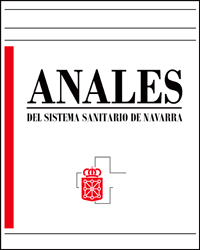Surgery for obstructive sleep apnea
Keywords:
Cirugía de la apnea del sueño. SAOS. Amigdalectomía. Uvulopalatofaringoplastia. Suspensión hioidea. Avance geniogloso. Avance Bimaxilar.Abstract
Nasal continuous positive airway pressure (CPAP) is considered an ideal treatment for treating Obstructive Sleep Apnea Syndrome (OSAS), due to its being conservative and reversible; however, there is a poor rate of adherence in its long-term use. Surgery can significantly complement those cases where CPAP is not tolerated. Surgery for OSAS must be carried out taking into account the degree of obstructive apnea, the place of greatest obstruction and the experience of the medical team. The more severe the OSAS, the more aggressive the surgical therapy can be. The place of obstruction must not be considered in a simplistic way, in which only one place of obstruction is defined, but as a general alteration of the airway where the surgeon must act in order to carry out an effective remodelling. This paper describes different types of surgery and their efficacy in OSAS according to the anatomical area involved (nose, adenoidal surgery, tonsils, soft palate, base of the tongue, hypopharynx and bimaxillary protrusion). The scientific evidence shows that at present reconstructive surgery of the airway competes effectively with medical treatment.Downloads
Downloads
Published
How to Cite
Issue
Section
License
La revista Anales del Sistema Sanitario de Navarra es publicada por el Departamento de Salud del Gobierno de Navarra (España), quien conserva los derechos patrimoniales (copyright ) sobre el artículo publicado y favorece y permite la difusión del mismo bajo licencia Creative Commons Reconocimiento-CompartirIgual 4.0 Internacional (CC BY-SA 4.0). Esta licencia permite copiar, usar, difundir, transmitir y exponer públicamente el artículo, siempre que siempre que se cite la autoría y la publicación inicial en Anales del Sistema Sanitario de Navarra, y se distinga la existencia de esta licencia de uso.








